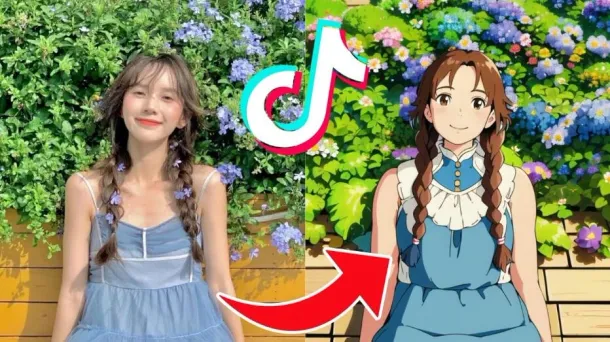AI-Generated Ghibli Art: What Slides Abroad Won’t Fly in the EU

The dreamy, hand-drawn world of Studio Ghibli has captured hearts for decades. But now, AI tools are replicating that iconic look with alarming precision. While fans celebrate the nostalgia, legal experts and artists—including Ghibli’s own founder, Hayao Miyazaki—are raising red flags. Is AI-generated Ghibli-style art a tribute, or a violation?
The Ghibli Aesthetic Enters the AI Age
Since the launch of GPT-4o, AI-generated images mimicking Studio Ghibli’s art style have gone viral. These images capture the soft palettes, sweeping landscapes, and whimsical charm that define the Ghibli brand. From meme makeovers to fantasy portraits, users are sharing AI-created visuals that look like they could have been lifted from a Miyazaki film.
But here’s the catch: Studio Ghibli’s visual identity isn’t just beautiful—it’s protected.
What Copyright Law Says About Ghibli’s Style
Under EU copyright law, particularly the EU Copyright Directive (2001/29/EC) and reinforced by the DSM Directive (2019/790), creators have the exclusive right to reproduce, adapt, and communicate their original works.
And Studio Ghibli’s works clearly meet the legal threshold for protection. Why?
- They are original works of authorship, reflecting Hayao Miyazaki’s personal vision and unique creative choices.
- The style is instantly recognizable—a key factor in identifying potential infringement.
- Their films, characters, and visuals are not generic animations; they’re intellectual property with commercial value and strong fan allegiance.
While copyright doesn’t protect general ideas or artistic “vibes,” it does protect specific expressions—like the distinct watercolor skies, character proportions, and dreamlike settings typical of a Ghibli scene.
Derivative Works or Just Inspired Images?
This is the legal gray area.
If AI-generated content reproduces Ghibli’s specific artistic features, such as the facial style of a character or the layout of a recognizable background, it could qualify as a derivative work. Under EU law, derivative works require explicit authorization from the original creator or rights holder.
As of now, there's no public indication that OpenAI or other companies have obtained a license from Studio Ghibli to generate content in this style. If copyrighted Ghibli materials were also used during AI training without permission, the legal risks increase.
Miyazaki’s Stance: No Room for Machines
This isn’t just a legal matter—it’s deeply personal.
Hayao Miyazaki has made his position clear. In a widely shared interview, he dismissed AI-generated art as “an insult to life itself.” He sees animation as a craft rooted in human observation, emotion, and effort—values he believes machines cannot replicate.
This philosophical stance strengthens Studio Ghibli’s potential legal claim: unauthorized imitation of their work goes against the core identity of the brand, diluting both its artistic intent and commercial reputation.
Could AI Get Away With It? Not Under EU Law
Supporters of AI often argue that style isn’t protected, relying on the idea-expression dichotomy. But EU law leans more toward protecting distinctive expressions that are clearly linked to a creator's identity—especially if the imitation affects market value or confuses the public.
Moreover, the DSM Directive allows rights holders to opt out of data mining, meaning AI companies may need permission to use copyrighted content as training data. If Studio Ghibli opted out—or never gave consent in the first place—using their visuals to train an AI model may already violate EU copyright rules.
Final Takeaway: Tread Carefully with Ghibli-Inspired AI Art
Creating or sharing AI art that mimics Studio Ghibli may feel like harmless fun—but from a legal standpoint, it’s risky.
- Studio Ghibli’s work is protected under copyright and distinctively expressive, especially under EU law.
- Replicating its visual language through AI tools without permission may amount to unauthorized reproduction.
- If copyrighted materials were used to train AI models, data mining protections under the DSM Directive could also be violated.
Need Legal Clarity on AI and IP?
If you’re developing, using, or sharing AI-generated art—especially based on iconic styles like Ghibli’s—it’s essential to understand your legal position.
Our team at KOREJZOVA LEGAL specializes in intellectual property. Let us help you stay compliant while exploring the cutting edge of AI creativity.
Sources
Text
Ali, Zakaria. ‘“An Insult to Life Itself”: Studio Ghibli’s Hayao Miyazaki Hates AI Passionately, And He’s Told Us Why’. ScreenRant, 27 Mar. 2025, https://screenrant.com/studio-ghibli-ai-anime-art-hayao-miyazaki-explainer/.
‘GHIBLI AI ART AND COPYRIGHT: THE COPYRIGHT DILEMMA OF GHIBLI STYLE CREATIONS AND THE LOOMING LEGAL BATTLES AHEAD’. The IP Press, 31 Mar. 2025, https://www.theippress.com/2025/03/31/ghibli-ai-art-and-copyright-the-copyright-dilemma-of-ghibli-style-creations-and-the-looming-legal-battles-ahead/.
Photo
‘10 Best Studio Ghibli AI Free Generators | Convert Photo to Ghibli Art [Free & Paid]’. Vidnoz, 8 Apr. 2025, https://www.vidnoz.com/ai-solutions/studio-ghibli-filter.html.
Video
Hayao Miyazaki’s Thoughts on Artificial Intelligence . @manhattanprojectforanuclea3424, https://www.youtube.com/watch?si=h9knH1hQa0chtxMT&v=ngZ0K3lWKRc&feature=youtu.be. Accessed 22 Apr. 2025.